THEORIES OF COUNSELING
THIRD EDITION
SAMUEL T.GLADDING
Wake Forest University
ROWMAN & LITTLEFIELD
LANHAM BOULDER NEW YORK LONDON
Acquisitions Editor: Mark Kerr
Acquisitions Assistant: Courtney Packard
Sales and Marketing Inquiries: textbooks@rowman.com
Credits and acknowledgments for material borrowed from other sources, and reproduced with permission, appear on the appropriate pages within the text.
Published by Rowman & Littlefield
An imprint of The Rowman & Littlefield Publishing Group, Inc.
4501 Forbes Boulevard, Suite 200, Lanham, Maryland 20706
www.rowman.com
8690 Paul Street, London EC2A 4NE
Copyright 2022 by Rowman & Littlefield Publishing Group, Inc.
All rights reserved. No part of this book may be reproduced in any form or by any electronic or mechanical means, including information storage and retrieval systems, without written permission from the publisher, except by a reviewer who may quote passages in a review.
British Library Cataloguing in Publication Information Available
Library of Congress Cataloging-in-Publication Data
Names: Gladding, Samuel T., author.
Title: Theories of counseling / Samuel T. Gladding, Wake Forest University.
Description: Third edition. | Lanham : Rowman & Littlefield, [2022] | Includes bibliographical references and index.
Identifiers: LCCN 2021009166 (print) | LCCN 2021009167 (ebook) | ISBN 9781538141076 (cloth; alk. paper) | ISBN 9781538141083 (paperback; alk. paper) | ISBN 9781538141090 (epub)
Subjects: LCSH: Counseling. | Counseling psychology.
Classification: LCC BF636.6.G627 2022(print) | LCC BF636.6(ebook) | DDC 158.3dc23
LC record available at https://lccn.loc.gov/2021009166
LC ebook record available at https://lccn.loc.gov/2021009167
 The paper used in this publication meets the minimum requirements of American National Standard for Information SciencesPermanence of Paper for Printed Library Materials, ANSI/NISO Z39.48-1992.
The paper used in this publication meets the minimum requirements of American National Standard for Information SciencesPermanence of Paper for Printed Library Materials, ANSI/NISO Z39.48-1992.
To Pal,
aka Inez Barnes Templeman,
my maternal grandmother,
a positive and dynamic influence
who accepted me unconditionally,
taught me by example kindness, civility, and generosity,
and showed me how to love others who are different
Preface
Theories are guiding lights. They give us some direction when we are with clients who have come to us in pain and with problems or concerns they do not know how to handle. Like light, theories can and do change. Some become brighter with time, others shift their focus, and still others fade because they either lack a solid foundation or lose their relevance for the populations we serve. Wondrously new theories, like emerging lights, are generated as insightful clinicians and academics construct them out of the context in which people live.
Because this book is about counseling theories that are most prevalent at the beginning of the 21st century, it should be read in the light of its time. Some of the material covered here will shine brighter in the future whereas other ideas will fade. In addition, some theories explained here may change their emphases. New ways of working with client populations will be created as practitioners discover new means of helping individuals in mental distress. Thus the knowledge gained from this text will be finite. To keep growing as a practitioner, you will have to study and read continuously about the latest developments in counseling and how theories intersect with practice.
So why should you study these theories at this time? It is simple. They are the best and most complete ways of working with others that we have at our disposal. Furthermore, they provide ways of conceptualizing the words and actions of individuals and working constructively with them. Theories, if employed judiciously, will shed light on your work and give you direction as to what helping professionals at other levels and specialties do. Without such a basis for making plans and decisions, you and others who provide counseling services would have to rely on trial and error or on intuition, neither of which is as efficient or effective.
This book is laid out developmentally. The order is chronological starting with a chapter on theories and therapies, then covering 15 widely used theories and ending with chapters on crisis counseling and ethics. Each of the theories covered in this book is distinct as are the branches of a tree. Yet, like branches, they are connected to the trunk of the tree. Conceptually and literally each influences and gives life to the others (see ).
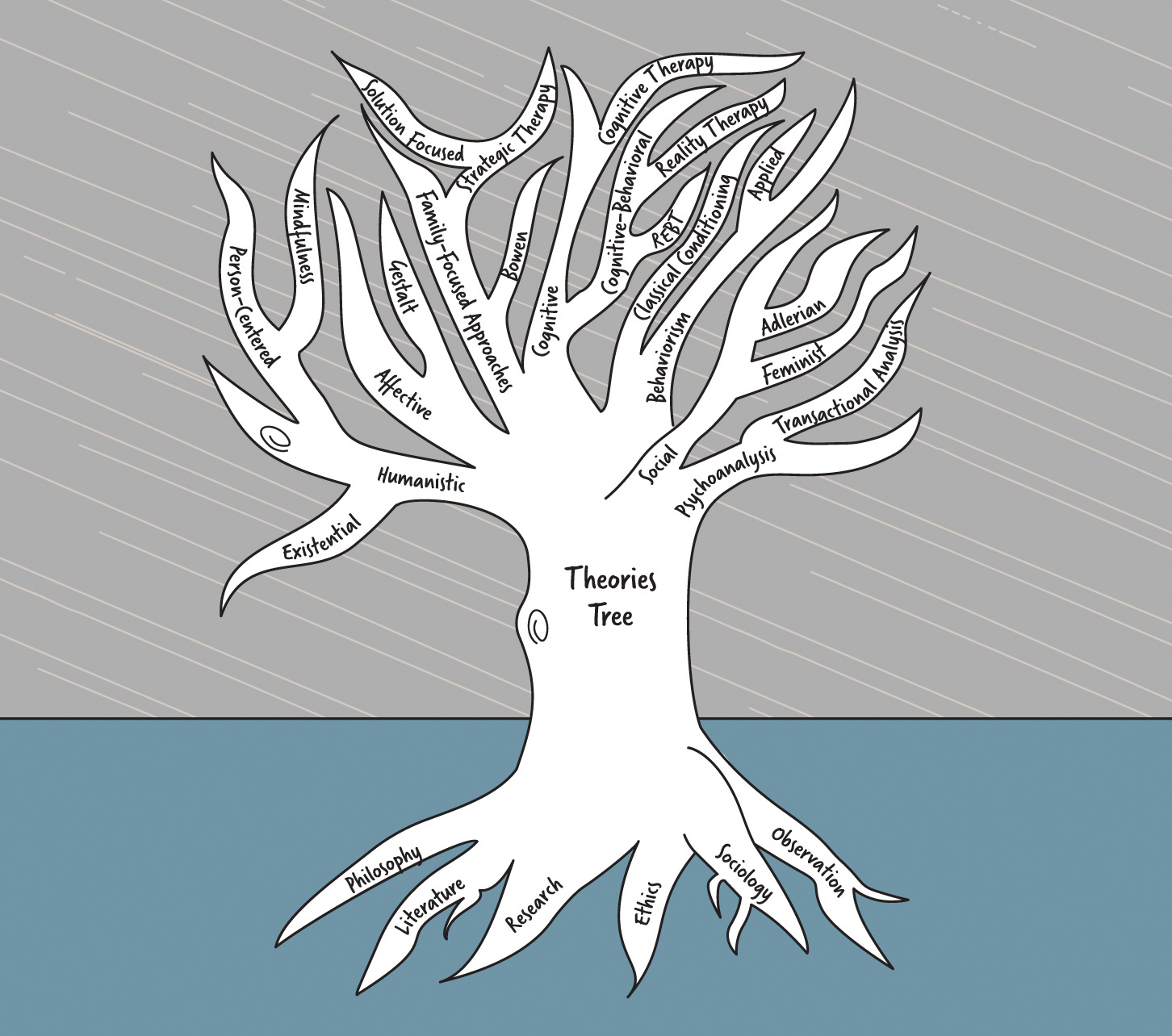
Figure 0.1 Theories tree
Shiri Eshhar for Zebra on Wheels
After of this book, with an exploration of what theories are, the next 15 chapters on theories follow a uniform outline:
Chapter Overview
Major Theorist(s)
View of Human Nature/Personality
Role of the Counselor
Goals
Process and Techniques
Diversity and Multicultural Issues
Evaluation of the Theory
Treating Linda: A case showing how a client would be treated with the chapter theory
Summing Up
Chapter Recap
Learning More
Classroom Activities
The final two chapters of the book cover ethical issues in counseling and crisis counseling.
NEW FEATURES OF THE THIRD EDITION
This third edition of Theories of Counseling is geared toward counselors and those who aspire to be counselors. You will find several new features helpful.
The first new feature in this edition is that each chapter begins with an overview of what the chapter will focus on. In this way, you as the reader get an idea of some of the most important points that will be covered. Parallel to this beginning is an even more extensive ending entitled Chapter Recap at the Summing Up of the chapters where crucial material covered in the chapters is outlined. Thus as a reader you are exposed to both an expectation and a summarization of the chapter contents.
The second new feature is the inclusion of five reflective questions in each chapter. They are included to help you think more about the theory you are reading about and to personalize concepts. These reflections ask you as a reader to think about your life experiences and the concepts covered. They are meant to make the material in each chapter more personal.
The third new feature of this edition is that more than 125 new references have been added while keeping older classical ones. Consulting both will help you as a reader find pertinent information from sources you may want to follow up on.
The fourth new feature of this edition is a chapter on psychodrama. This theory is more group oriented than the other theories addressed in the book. It is an important way to work with clients who have interpersonal difficulties.
The fifth new feature of this book is it returns to the first edition of this text in that its focus is on counseling rather than human services. This renewed emphasis makes this book more versatile and appropriate for counselors at all experience levels as well as for other mental health professionals who wish to learn more about therapeutic approaches.
Finally, this edition of Theories of Counseling

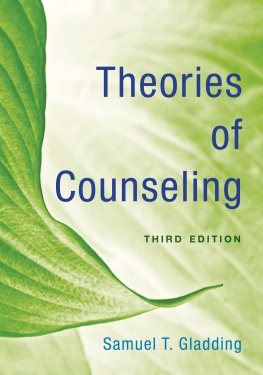
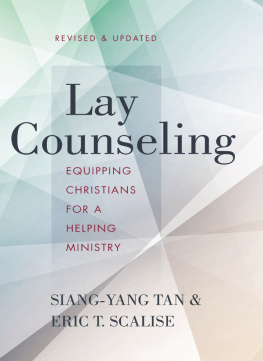

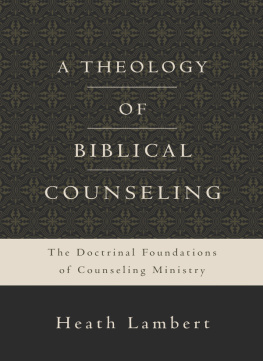



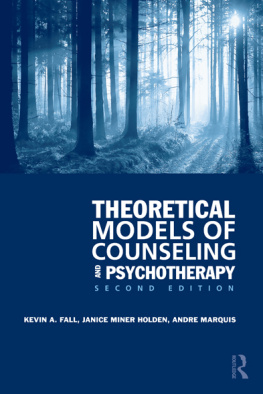
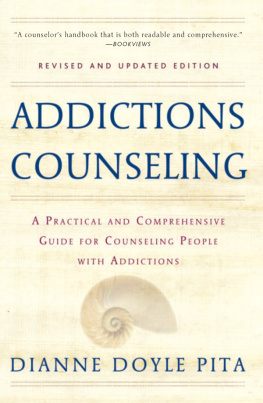


 The paper used in this publication meets the minimum requirements of American National Standard for Information SciencesPermanence of Paper for Printed Library Materials, ANSI/NISO Z39.48-1992.
The paper used in this publication meets the minimum requirements of American National Standard for Information SciencesPermanence of Paper for Printed Library Materials, ANSI/NISO Z39.48-1992.